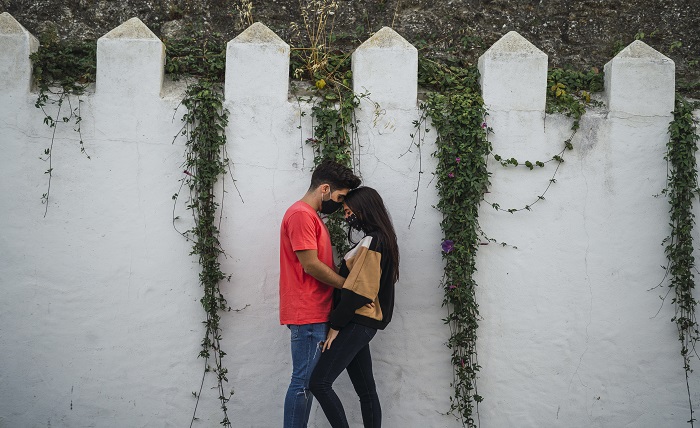India’s digital culture has reshaped how love is expressed. Poetry, shayari, and short captions once written in notebooks now thrive on screens. Smartphones have turned intimate words into public expressions, blending tradition with technology in unexpected and powerful ways.
From Handwritten Shayari to Digital Expressions
Indian culture has always held poetry as the language of love. Since the poetic couplets of Mirza Ghalib to the lyrical Bollywood songs, words have always had an emotional load. What is different is the medium Written letters and notebooks have been substituted with Instagram stories, WhatsApp statuses and 15 second reels.
The mobile applications have made expression democratic A teenager in Jaipur can compose verse in Hindi, put background music and broadcast it to thousands of people at once. Online media give a voice to those who can never reach a conventional publishing house. The shift maintains the cultural traditions but makes them applicable to the younger generations.
Curiously, brands and lifestyle resources are also aware of this change. Captions or visual poetry, in the shayari style, are combined with many campaigns to appeal to the emotions of the consumers. Individuals who look to apply innovative means of integrating tradition and modern story-telling should merely click here to read about communities that embrace the use of digital language to find romance in Indian society.
The Psychology of Digital Love Language
Why is it that people feel obliged to post poetic texts on the Internet? The psychologists say that it is about connection and validation. In India, where community and family ties are still profound, the touch of love through a brief caption speaks of care, loyalty and belonging.
The social sites support this action as they reward posts with likes, comments, and shares. The responses are a form of feedback, and in turn encourage the users to create more. Such electronic interactions have a symbolic value in romantic situations. A heart emoji, a few lines of Urdu or a Bollywood song becomes the regular language of communication between spouses.
There is a performative aspect also. Not every shayari is sung by a single person but it is a projection of an image that a person appears to be poetic, thoughtful or modern. This dual nature makes digital love language, both personal and public, which is an affirmation of how mobile culture has fused the traditional notion of feelings with the social approval factors.
India’s Festivals, Films, and the Amplification of Love
Cinema and festivals are very important elements that define the way Indians show love. Although the origin of Valentine’s Day can be traced to various parts of the world, in India, Diwali, Eid and Holi tend to have a spillover effect when it comes to the number of romantic digital posts. Lovers employ colored filters, holiday greetings, and lyrical lines to spend a good time together online.
Bollywood still establishes a precedent. Romantic conversations and songs of the hit movies are exchanged over messaging programs. The successful series on streaming services also have created new types of love- more realistic, sometimes unsanitary but very real and relatable. This content does not only entertain, but also provides material to create captions, memes and shayari adaptations.
There are also regional customs that add to the image Tamil, Bengali and Punjabi poets, Malayalam romantic songs, and Punjabi folk lyrics spread through digital media. The mutuality of this regional creativity and cinematic influence at a national level enhances the language of love, which could be presented in various languages and through reflection of cultural diversity in India in the digital platform.
Technology as the Medium of Modern Romance
Technology has become the unseen force that directs the manner in which Indians show love. Messaging apps offer intimacy and social media offers visibility. AR filters allow couples to create fun selfies, and even AI tools can come up with suggestions on captions or even poetic lines.
The trend is driven by mobile-first behaviours in India. There is cheap data and more than 750 million smartphone users and the digital expressions of love are no longer limited to urban centers. Youth in the tier-2 and tier-3 cities are equally active in it, adding regional flavour of shayari and music to the activity.
The intersection is also bound here in the commerce Brands are not selling products but they sell experience with a romantic theme in campaign. A piece of jewelry advertised with poetic text or a cafe that sells digital love stories show that the language of love is being marketed as a part of a lifestyle. With more interactive apps, the influence of technology in developing romantic communication will continue to grow.
Conclusion
The language of love in India has always been poetic, but screens have amplified it. What once lived in handwritten verses and songs now thrives across social media, messaging platforms, and streaming apps. This transformation reflects a blend of tradition, psychology, and technology, showing how timeless emotions adapt to modern forms.
From festivals to Bollywood to regional music, love expressions remain central to India’s cultural identity. The difference is that digital platforms allow them to reach wider audiences, turning private feelings into shared cultural moments.
Ultimately, words remain powerful, but their stage has changed. Screens are now the canvas where love is written, read, and celebrated, ensuring that India’s romantic spirit continues to flourish in its digital age.
